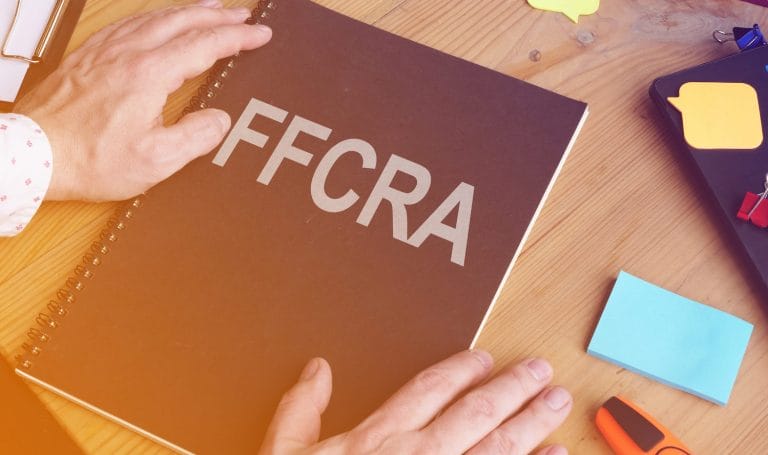
Categories

This resource is provided by WLJ Labor & Employment Team attorney Shelby Howlett (showlett@wlj.com).
On September 16, 2020, the United States Department of Labor (DOL) published revisions to its guidance regarding the Families First Corona Virus Relief Act (FFCRA). Congress enacted the FFCRA in April to address emergencies arising out of the COVID-19 global pandemic and the DOL published temporary regulations interpreting the Act shortly thereafter. In general, the FFCRA requires certain employers to provide their employees with paid sick leave or expanded family and medical leave for specified reasons related to COVID-19.
In August, a federal court in the Southern District of New York ruled that some of the DOL’s FFCRA regulations were invalid, most notably the one that broadly defined “health care provider.” The DOL updated its guidelines in response to the court’s ruling. The new guidelines revise portions of the regulations (specifically the definition of “health care provider”) while reaffirming and clarifying others on the use of intermittent leave, the availability of work’s impact on the right to take leave, and when employees must submit documentation to take leave. The amended regulations went into effect on September 16, 2020, and are set to expire on December 31, 2020.
Definition of “Health Care Provider” Significantly Narrowed
The FFCRA allows employers to exclude employees who are “health care providers” from taking Emergency Paid Sick Leave (EPSL) or Expanded Family and Medical Leave (EFML). Initially, the DOL’s regulations used an expansive definition of the term “health care provider.” The definition focused on the employer’s business rather than the duties of the employee and allowed health care employers to exempt all of their employees from FFCRA benefits. However, the district court invalidated that definition as being overbroad.
The DOL has now revised the definition of a “health care provider” and has limited it to employees who meet the definition under the Family Medical Leave Act (FMLA) or who are employed to provide diagnostic services, preventative services, treatment services, or other services that are integral and necessary to the provision of such services so as to adversely impact patient care if not provided. This revised definition shifts focus away from the employer’s business and requires employers to undertake a position-specific analysis of whether an employee meets the definition of a health care provider.
Specifically included in this definition are medical doctors, nurse practitioners, and other licensed healthcare professionals, as well as employees who provide services under the direction of such a professional. The definition also includes “employees who are otherwise integrated into and necessary to the provision of healthcare services, such as laboratory technicians who process test results necessary to diagnoses and treatment.” It also includes employees who care for medical patients, such as those who bathe, dress, feed, or transport patients.
The revised definition excludes employees who do not actually provide health care services, even if their services could affect the provision of health care services. For example, IT professionals, building maintenance staff, human resources personnel, food services workers, and records managers are not considered “health care workers” under the revised definition, even if such employees work for a health care employer.
It is unclear whether the revised definition applies retroactively, or whether reliance on the original definition provides a defense to an employee’s claim for retroactive benefits. Employers may wish to consult their employment attorney for more specific guidance. Regardless, employers may need to reconsider FFCRA leave requests from employees who were not eligible under the original definition, but are now eligible under the revised definition.
Employer Consent Requirement for Intermittent Leave Reaffirmed
The federal court invalidated the DOL’s guidance providing that an employee must receive employer approval in order to take intermittent leave under the FFCRA. According to the court, the DOL did not provide sufficient justification for imposing the employer consent requirement. However, in its updated regulations, the DOL reaffirmed that, where FFCRA leave is permitted, an employee must obtain approval from their employer to take intermittent leave. The FFCRA itself does not address intermittent leave and the DOL explained that, because Congress gave the DOL broad regulatory authority to effectuate the purposes of leave under the FFCRA, it relied on certain aspects of the FMLA in its interpretation regarding intermittent leave. The DOL also explained that, as in the regular FMLA regulations, when the need for intermittent leave is foreseeable, it must be scheduled in a way that is minimally disruptive to business operations.
Requirement that an Employee Actually Have Work from Which to Take Leave Still in Place
The DOL also reaffirmed that an employee may only take leave under the FFCRA if the employee actually has work from which to take leave. If the employee is already on a mandatory leave from employment, whether because of a furlough, business closure, or otherwise, that employee would not be eligible for benefits provided by the FFCRA. In other words, the employee’s FFCRA qualifying reason for leave must be the but-for reason that the employee is not working. The DOL explained that, “leave is most simply and clearly understood as an authorized absence from work; if an employee is not expected or required to work, he or she is not taking leave.”
The DOL cautioned, however, that an employer cannot withhold work from an employee in order to prevent the employee from taking FFCRA leave and emphasized that the unavailability of work must be due to legitimate business reasons.
Timing of Employee Documentation Relaxed
The DOL tweaked the requirement that an employee provide documentation of their need to take FFCRA leave before taking such leave. Now an employee must provide documentation “as soon as it is practicable,” which in most cases will be when the employee provides notice of the need for FFCRA leave to the employer. In some instances, providing documentation may become practicable after the employee has started taking leave. However, the DOL confirmed that, in situations where the need for leave is foreseeable, the employee must provide notice and documentation as soon as possible. This includes when an employee must take EFML leave to care for a child whose school or place of care is closed.
Takeaways
Although the FFCRA is set to expire at the end of 2020, it is a developing area of law that has major implications for both employers and their employees. And an extension of the FFCRA leave provisions is not entirely out of the picture, especially given the present state of the pandemic. Understand your obligations under the FFCRA, be sure to provide appropriate notice of the FFCRA provisions to your employees, and put in place the proper handbook policies and request forms. If you have questions about the FFCRA and how it applies to your business, contact your employment attorney before making decisions.











































































